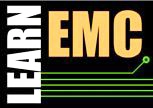EMC Question of the Week: May 19, 2025

The primary purpose of printed circuit board shields is to reduce
- conducted coupling
- radiated coupling
- near-field coupling
- power bus noise
Answer
The best answer is “c.” Shielding the circuits/components on a printed circuit board rarely has any significant impact on the conducted coupling to or from those circuit/components. These shields contain electric fields and redirect high-frequency magnetic fields. This reduces near-field coupling to other circuits/components that can be the victims of interference from the shielded circuits or can carry the interference to radiating structures. Printed circuit board shields can also protect the shielded circuits from incident electric or magnetic fields.
Radiated coupling directly from/to the components or circuits on a printed circuit is rarely an issue. These structures tend to be too small and/or too lossy to be efficient radiation sources (or receptors).
Virtually all shields (not just board-level shields) are located in the near-field of the source they are containing or the victim they are protecting. How well they work depends on how well they distort or contain the near-electric and/or near-magnetic fields. Shielding materials are often characterized by their plane-wave shielding effectiveness, but in real applications, shields don't simply attenuate plane waves.
Have a comment or question regarding this solution? We'd like to hear from you. Email us at
